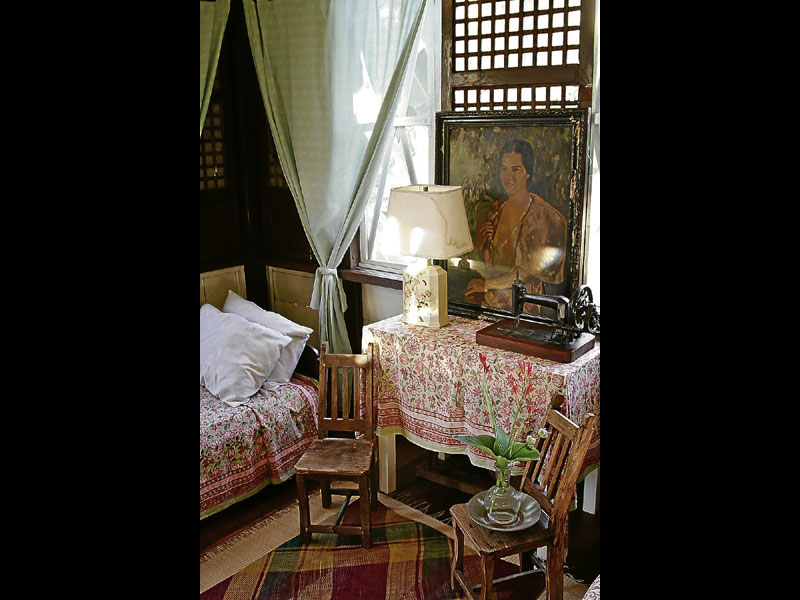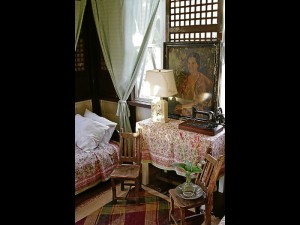 I watched a most heartwarming Christmas story in, of all places, Baclayon, Bohol, early this year. It was a puppet show staged by the neighborhood youngsters who, with touching earnestness, manipulated their puppets—a moth and a firefly in search of the Baby Jesus being born in the manger. As the engaging story unfolded, the head of the moth, or was it the firefly, accidentally popped out, flew—the glue didn’t hold, apparently—and landed on my lap. Cute.
I watched a most heartwarming Christmas story in, of all places, Baclayon, Bohol, early this year. It was a puppet show staged by the neighborhood youngsters who, with touching earnestness, manipulated their puppets—a moth and a firefly in search of the Baby Jesus being born in the manger. As the engaging story unfolded, the head of the moth, or was it the firefly, accidentally popped out, flew—the glue didn’t hold, apparently—and landed on my lap. Cute.
But then the show must go on. The story was actually so well written, the kids’ performance so eloquent, that you felt all the more cocooned in this rustic setting that night, so well removed from your cares in Manila.
“Ang Aniniput ug ang Anunugba” (The Firefly and the Moth) was written by Ino Manalo for the children in his neighborhood in Baclayon. As many know, Manalo is a culture official and heritage advocate who set roots in Bohol in 2009, mined the province’s natural attractions, old churches, traditions and culture heritage, and with Ayala scion, Bea Zobel Jr., helped turn Bohol into a culture destination.
After his stint as director of the Metropolitan Museum in the early 2000s, he made his home in Baclayon and shuttled between Manila and Bohol. He linked up with Bohol residents wanting to get involved in preserving and promoting the Boholano heritage and crafts.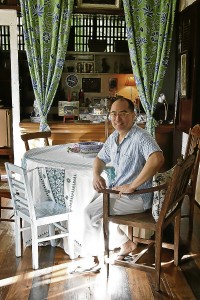
One of the products of such bonding with the community is this puppet theater staged for visitors from Manila and elsewhere, by a group of neighborhood youngsters who call themselves Usbong Papet Baclayon. This puppet theater group was trained by Amihan Bonifacio Ramolete, the daughter of Amelia Bonifacio, the theater luminary and founder of Teatro Mulat.
This puppet theater is set in a charming makeshift space on the ground floor entertaining area of Manalo’s home in Baclayon— a nice cap to the fireflies night tour which many tourists have come to love in Bohol.
Why would a busy culture scholar who loves to travel—he regularly contributes his travelogue to Inquirer Lifestyle—want to settle down in Bohol?
We didn’t get a singular explanation to this, but we only had to see and feel Manalo’s zest for the daily life in Baclayon and enjoy the laidback, provincial ambiance of his home, to know the answer.
“It’s recapturing the graciousness of the Filipino life,” he said.
Instead of mapping his days around the traffic and the demands of the rat race, as one does in Metro Manila, Manalo fills his days with little and big passions. For instance, Wednesdays are visits to the market where the ukay-ukay yields him such surprising finds as Portuguese or Indian fabrics.
Old churches and homes
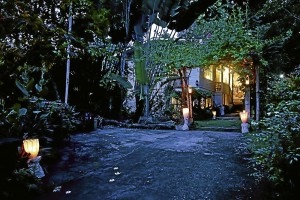 Visits to churches and old homes are the highlights of his days. “I visit churches I hadn’t even seen in all my years here. There still are many,” he said.
Visits to churches and old homes are the highlights of his days. “I visit churches I hadn’t even seen in all my years here. There still are many,” he said.
He found a house on the mountain with, he gushed, “the most incredible painted walls.”
“You’ll never know what you will see, and which you might never see again,” he said.
He was referring to old houses being torn down one after another.
Manalo’s own simple house is a lure in itself. Standing in a big garden along the main road, it is the Villamor house built by this old Baclayon family in the ’20s. Since the descendants now have their own homes, the ancestral home didn’t have an occupant; Manalo became the eager tenant with a beautiful vision for the old two-story house.
Manalo left the house the way it is, but spruced it up with décor and art objects that spoke of the old and the new, of Bohol heritage and contemporary Filipino lifestyle. As he said, this charming house with sawali ceiling and capiz windows “crystalize the Bohol style” for him.
One walks onto its garden that is naturally lush—not manicured nor landscaped in a contrived manner—with fruit trees, ferns, blooms, leading to the house made of wood and concrete. Going up its stairway, one notices the brooms propped up at the corner—so like in the Filipino homes of old.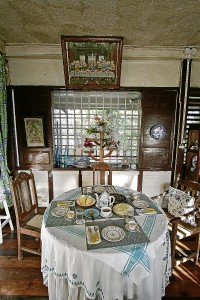
At the top of the stairs is the main door that opens to the living/entertaining area, to the dining room and kitchen on the right, the bedrooms on the left. Just like in the early 20th century Philippine homes inspired by the bahay-na-bato, this old Bohol house has all its entertaining and family rooms on the second floor.
It’s an open space, with cross ventilation, where the eye can make a clean sweep of everything at once. Your curiosity is drawn by each and every object in this charming house.
“I wanted to show Bohol pieces in contemporary context,” Manalo explained the objects that add character to this ’20s house.
On a wooden console is a wooden verina from Baclayon and a wooden urn which Manalo described as “quintessential Bohol in its color and verve.”
There’s also a “Sagrada Familia” in wood, nearly burned and retrieved from a Bohol town, in piña garb done by fashion designer Jojie Lloren.
In a prominent corner is a spinning wheel for raffia thread, sourced from northern Bohol.
You get drawn to the sawali ceiling because that’s a rarity these days. For the capiz windows, Manalo took the time to collect capiz shells to complete the window construction.
A small table is covered with an abel cloth—a surprise reminder of southern Philippines and a gift from Manalo’s friend, Irene Marcos Araneta.
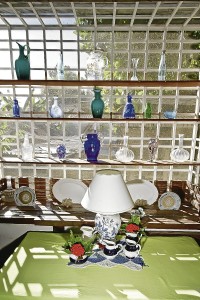 The mix of objects gets more varied. In the bedroom is a vintage oil portrait of a woman (no relative of Manalo at all) which Manalo unearthed in the flea markets of Bangkal, Makati.
The mix of objects gets more varied. In the bedroom is a vintage oil portrait of a woman (no relative of Manalo at all) which Manalo unearthed in the flea markets of Bangkal, Makati.
On the wall are twin frames displaying terno sleeves done in the sinuksok style (thread inserted into the mesh).
In the dining room is a 1915 oil of fruit cluster done by maestro Canuto Avila who was noted for his religious murals and paintings on ceilings in churches in the Visayas, including Loboc church .
What Manalo finds very interesting is the oil on canvas painting of the Last Supper overlooking the dining table.
“I first spotted it five years ago, with a dealer, but somebody got it ahead of me,” recalled Manalo.
“Then I found it again with another dealer who didn’t want to sell it. Then the second dealer died.”
Noting how no Filipino dining room is complete without the Last Supper, Manalo likes this one because it’s a local interpretation of a classic. “This was done perhaps in the ’30s, in the pre-war,” he said. “Notice how the names of the apostles are at the border of the tablecloth.”
Manalo bonds and works with a few women in the community to promote Bohol culture and preserve heritage homes. This heritage homeowners group is called the Bahandi.
Visitors to Bohol can join the Bahandi’s Walking Tour in Baclayon which includes a tour of the historical Baclayon Church, the traditional bakery, town springs, heritage homes. The Walking Tour includes a merienda in the church grounds.
Manalo loves to travel since he does consultancy work with Unesco Beijing, has done workshops on World Heritage Education for Sustainable Development in China, Korea, Mongolia.
He’s just been appointed executive director of the National Archives by President Aquino. His shuttle between Manila and Bohol thus continues.
His culture work has given him a trove of enriching travel/culture stories —from China to India, some of which he’s written for Inquirer Lifestyle—but you know that to Manalo, Bohol remains a story that is yet unfolding.

